MALAYSIANSKINI | She moved to Port Dickson 10 years ago into an old bungalow built with stone and bricks, located in a secluded residential area surrounded by spacious land and vivid, unruly green.
There was a tall avocado tree in the backyard, but it did not bear fruit for the first six years after she planted it. This was where Sharon Chin, her partner Zedeck Siew, and their little cats hid from the hustle and bustle of the city to concentrate on their creative art and writings.
"City life is becoming impossible," said Chin, an artist born in the 1980s who grew up in Petaling Jaya. She recalled her busy life in the city and how she was chasing one project after another after she graduated from Melbourne in 2005.
Chin said that by around 2011-12, she felt that she was losing herself to the hustle and bustle of daily life.
"I was working so hard, but I wasn't getting anywhere financially. I wasn't getting anywhere artistically. I had lost the trait of doing things that came from me.
"It is a subtle thing, but I realised it was other people who were commissioning projects, so I fulfilled the brief of the people who commissioned the project. It is a bit like I had become a content creator."
She drew an analogy between herself and the people who walked away from Omelas, a wonderful and prosperous city that exists because of an abused child in a dungeon. In the story by Ursula K Le Guin, the city's inhabitants are aware that it would collapse should anyone save the child.
Eventually, Chin and her partner decided to leave their 'Omelas' and move to PD to find themselves again.
"I think it was really a step into the unknown," she said.
Even though her partner's hometown of Port Dickson is not that far from KL, psychologically the distance proved an important difference for a city girl like herself.
"It is just like anything outside of Klang Valley; it feels as if there is a gap, a move away from the centre."
Chin suddenly found herself with much more time on her hands after moving there.
"(In the Klang Valley) there is always not enough time, even when on holiday there is also not enough time."
"(Suddenly) I was rich, very rich in time. It was a shock, and I didn't know how to deal with it," she laughed.

A booming art scene
In the early days after her return to Malaysia, Chin estimated there were art exhibitions being held every two weeks on average, but by the time she moved to PD, there was one held almost every night.
Thus, there was a conflict between the resources and opportunities of the city and the way it made her feel suffocated.
"The pace increased, yes. More art events, more people practising art, but then the welfare was not improving. Things have not gotten better; they are definitely getting worse in my direct experience.
"That part disturbs me. That means the material conditions for creators are not sustainable.
"It is a very precarious life, and I am speaking as somebody who has stable family finances. But already I feel vulnerable, so I can't imagine others," she stressed.
Chin feels that internal discussion among artists is still insufficient and is even on the decline.
After participating in grant funding programmes for years, she feels that they are not sustainable in terms of creating a healthy environment for the creative arts.
"This house belongs to my partner's family, and the fact that we don't have to pay rent has been really huge," she said, calling it a housing subsidy that frees the couple from being "mortgage slaves".
Saying that "city life is becoming impossible", Chin advocates similar subsidies for creators and believes this will help address the problem of centralisation in urban areas.
"If an artist has the autonomy to choose where they would like to live, that helps to mitigate some of the impacts of urban centralisation."
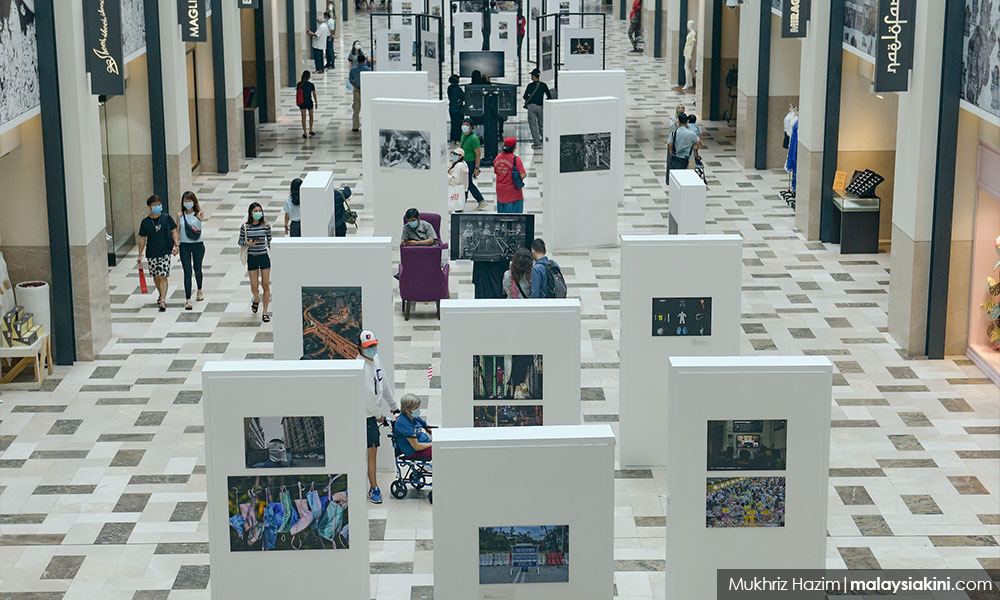
Artists and urban gentrification
Chin believes art creates value in a community but that the interactive relationship between artist, creation, and location does not always guarantee a positive direction.
"That is something we don't talk about at all," she said. Using the attractiveness of art to increase the value of a property has become a common trend of recent development, with some failed or incomplete developments inviting artists to inhabit space for free.
"Very often, once the artists have caused property value to shoot up, the artists themselves can no longer afford to continue staying in those spaces," she said.
This raises the question of who ultimately benefits from the value created as it is not just artists who get pushed out, as gentrification generally creates more social inequality, argued Chin.
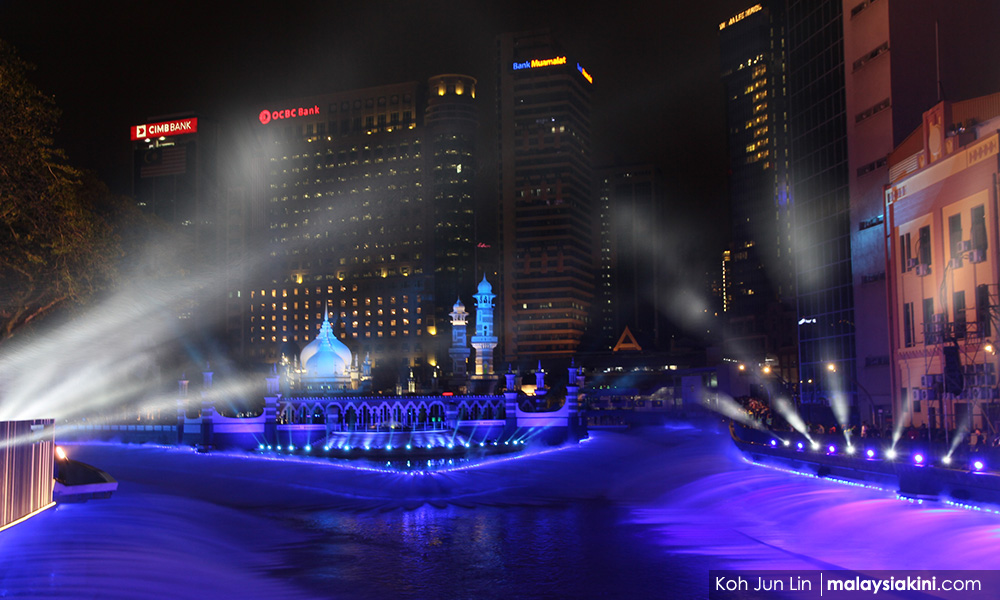
Chin cited the River of Life project at Medan Pasar in Kuala Lumpur which transformed the area into a modern urban space. It used to be a place for the homeless or people in transit.
She once wandered around KL at 3am and found that Medan Pasar was surrounded by shops with a lot of migrant workers.
"It is kind of safe, but now that whole area is in the process of gentrification. These people who used it get pushed out, where are they going to go?"
"They were using that space; it was functional for them," she said.
Chin said that in making architectural changes that were not "people-friendly" like introducing benches that prevent people from lying down; the result implicitly and systematically chased away the people who have been using the space.
"I don't know how we, as artists, should have a conversation about the effect that we have on a place."
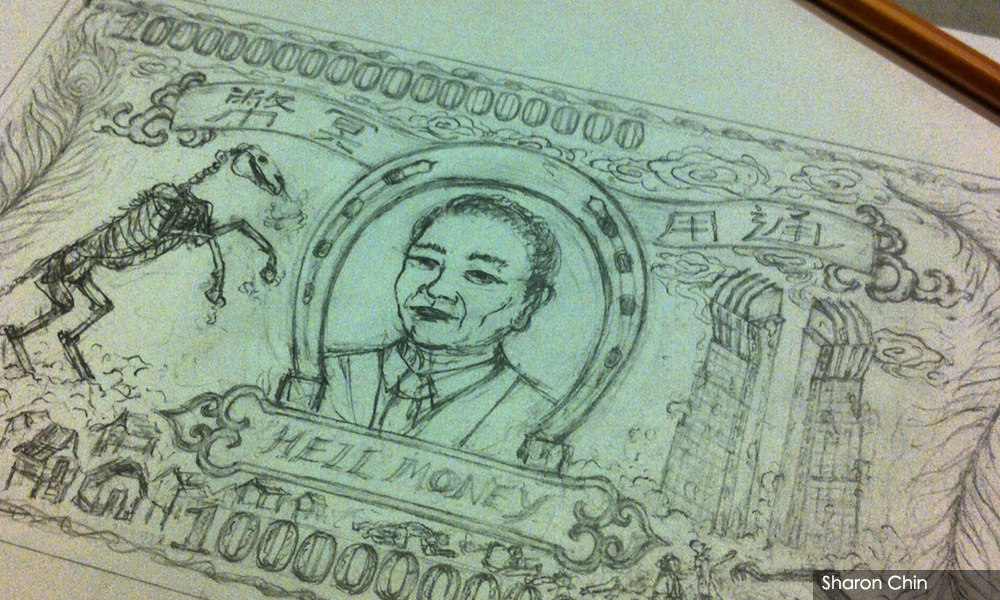
Constantly searching
The constant drive for economic growth and prosperity is an accepted message for those in the shadow of Mahathirism. The generation that collectively learned to sing Malaysia Berjaya or Wawasan 2020 in school was raised on a specific narrative of patriotism and development.
By contrast, Chin loved fiction and fantasy storybooks since she was very young, with Le Guin among her favourite writers. The imaginative scenarios projected in her young mind just could not match with the ideology crafted by the state apparatus.
"I have different patterns of thoughts that don't match with the reality or the ideological imprint of the Mahathir years - patriotism, and so on."
Initially, Chin thought that the ideal freedom promised in her storybooks would be realised once she flew to Western countries but found that she "couldn't stay away from Malaysia".
"All I knew was that I wasn't happy, and I was not at peace there nor here. I thought I could not be the only one, right? What makes me like this?
"Luckily, my chosen field, which is art, allows us to search and go deeper."
She finally found a way to resolve her inner conflicts.
"Each (viewpoint) is valid. Everything we bring with us is basically making this country. There is no such thing as not valid," she stressed.
"(For instance, some people might say) you only speak English, therefore what you think you said is not valid. Your Bahasa Melayu is not good, so not valid. Your Mandarin also not good; therefore, you are not really a Chinese person. Those tendencies are very strong in our culture. It needs a lot of semangat (spirit)."
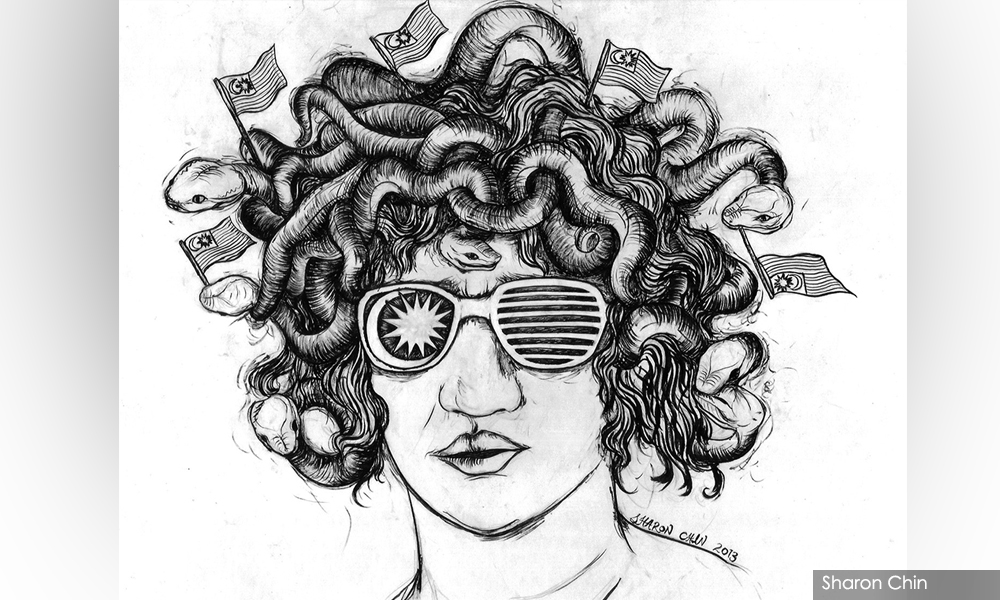
The people's history
Chin doesn't believe in patriotism or electoral politics, rather a connection to the space one inhabits. Nonetheless, many of her artworks echoed themes in current politics, such as the Bersih protests and general elections.
"Maybe some of the artists I admired, their works dealt with socio-political issues.
"There is a strong trait of dealing with social issues in Malaysian contemporary art indeed," she explained and also named a few artists whose artworks were socially engaging, such as Wong Hoy Cheong, Hasnul Jamal Saidon, and Zulkifli Yusoff.
"So it is definitely not new. It is harder to say where we are today in terms of contemporary art. I will always be part of it; I cannot deny it.
"But for me, my critiques are mainly about the social space of contemporary art, the power dynamics within the field. There are many micro issues within - inequality and social division because of race. It is just a reflection of a wider social condition," said Chin.
Last year, she was invited by the Singapore Biennale 2019 art platform to present her participatory performance and installation artwork called "In The Skin of a Tiger: Monument to What We Want (Tugu Kita)".
The exhibitions were held in national galleries both in Malaysia and Singapore, where a hundred participants were invited to sew geometrically shaped fabrics into giant banners.
These fabrics were reclaimed from political party flags which she collected after the 13th and 14th general elections.
Why sewing?
Chin replied: "It is about labour, a slow kind of labour that leads to change, especially like this change. It was all focused on politicians and Mahathir specifically. (The perception is that) he is the one who brought about the huge change. He got all the attention, and you can't look away."
"I am so tired of that story. It is not that I want to replace the story, but I want there to be my truth alongside it. So if you look back at history, it is not just one story. There was another one going on. It has been played on the record in public."
The participants might not get to see the end result, but she wanted them to wear shiny bandanas when sewing.
"What I wanted was that even if you cannot see the (complete) work, you can see the act of working together... the act of you sewing is visible."
"But you are not going to get credit for it. The politicians are going to get all the glamour."
Another reason is that sewing has always been seen as feminine labour, which she says is undervalued in our country.
"Feminisation of labour, migrant labour - that kind of labour is actually holding up the world, keeping it going, and we are expecting that they (women and migrants) will keep doing that work."
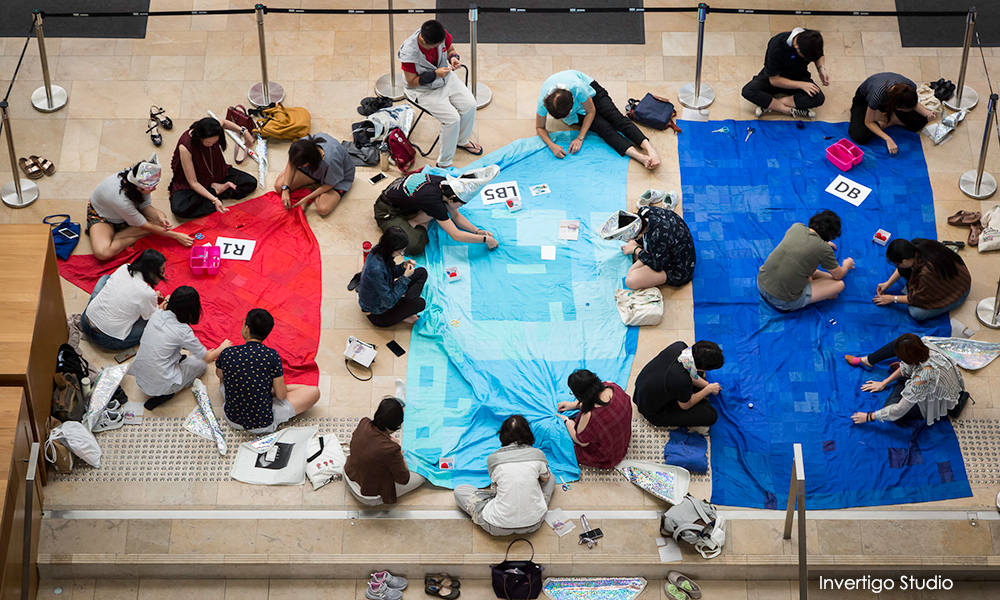
Feeling that Malaysian authorities and citizens targeted migrant workers and refugees during the movement control order that was enacted to control the spread of Covid-19, Chin created a short video clip based on a poem titled "Refugee" by 12-year-old Abdullah Kasem Al Yatim from Syria.
It is unacceptable to her when the public rejects these marginal groups just because they don't have proper documents.
"It is deeper than human rights. It is really about who we are as a country. I feel like the way we treat the Rohingyas is so painful, and that's the truth of who we are. We collectively carry that shame. It is terrible, but we should look at it."
"From what I observe about this land is that, actually, it is very accommodating. I experienced this from the garden here. There are so many different things growing at all times.
"It is not in a controlled way; they will just grow by themselves. So the birds would like to put some seeds here, then you will wonder why it got this plant here. It happens by itself, but the land is what accommodates it, and allows everything to grow."
"I feel that is the true spirit of this land. For me, I don't really believe in nation, religion, border, flag, but I have deep responsibilities or allegiance to this place or the land itself."
Smuggling in resources
Although spending most of her time in PD, Sharon admitted that she was still heavily dependent on the cultural resources from Klang Valley. She described this as "smuggling the resources from the centre", saying that hopefully through these various forms of subsidies, she could create and circulate an alternative system of values for the locals.
Recently, she went to a local second-hand shop to buy some white shirts. She plans to draw something on it and asked the shop owner if he is willing to resell them, and they can share the profit. For her, this is another form of "art exhibition".
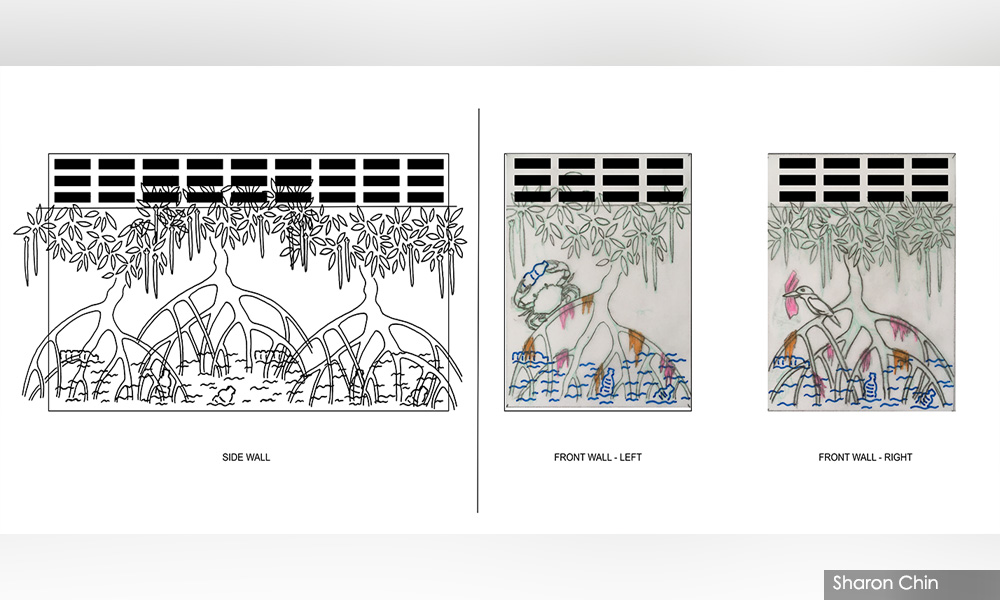
Despite identifying her home as a place to live in peace, she encountered a new struggle two years ago.
There was a factory nearby that caused sound and air pollution to the neighbourhood allegedly due to its expansion. Sharon and the residents decided to take collective action to fight for their rights of safety and quality of life.
Luckily, the non-stop noise which was like a buzzing airplane finally stopped after negotiations with the factory manager.
Nevertheless, the people here feel uncertainty as long as the giant plant remains.
"Are we going to continue to live here, are we going to be like a rumah degil (stubborn homeowner) when everyone is leaving, and we are the last ones to leave?" she wondered.
She decided to take her cue from the avocado tree.
The tree was fussy. They have been waiting for it to bear fruit for the past six years. She even made a joke with Siew and their neighbours: "See lah, if it bears fruits, then we will stay here."
This year, it finally bore fruit.
"I cannot leave so easily now because it is a bargain; it is a promise."
"It is a sign that the land, the place, this tree is trying to talk to me, telling me things, teaching me things, and reassuring me. We'll try and persist," Chin laughed.
MALAYSIANSKINI is a series on Malaysians you should know.
Previously featured:
Lemon Sky - the Malaysians behind Avengers and Starcraft
The PJ girl who just penned Disney's next movie
Fighting the factories' fearsome fumes
Keeping the Papia Kristang flag flying
From humble beginnings to USM's first Orang Asli faculty dean

